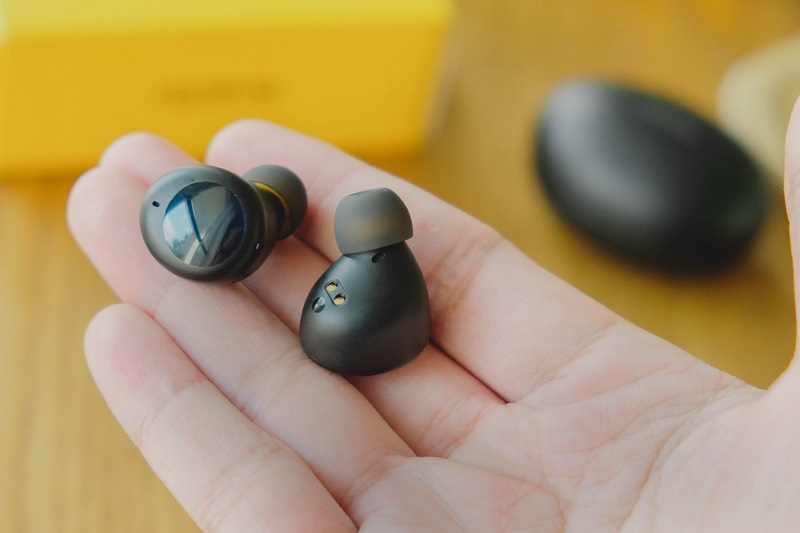
Imagine you are watching a movie or playing a game, but the sound is hitting a little too late like for a split-second. This delay is known as latency in headphones, a subtle and often frustrating issue that can seriously impact your listening experience.
When you test a new pair of wireless earbuds side by side with a gaming headset, the latency headphones meaning becomes clear. This is because the audio does not match the visuals and for gamers and musicians that is more than just a small hiccup.
This blog will explore everything about latency in headphones and explain the reasons behind this issue and the methods to solve it.
Latency can be described as the delay between when a sound is produced and when it is heard through the headphones. It is typically measured in milliseconds, but even a tiny delay is noticeable, especially when you are watching videos or playing gaming.
Some common scenarios where headphone latency is most noticeable are given below:
The latency headphones meaning is not just about Bluetooth or wireless signals, some wired headphones even can experience this slight lag because of the quality its quality.
Latency in audio can stem from various sources and understanding them is extremely important for resolving the issue. This is the most common causes for latency in audio:
Wireless audio is often compressed and decompressed, which takes time and creates a delay.
Devices nearby using the same frequency band can cause disruption and increased latency.
Outdated software can create a mismatch between the audio source and the headphones.
Some devices process sound more slowly than others, especially if there are filters or enhancements enabled.
Even though this might sound technical, it is all happening in the background — and the listener only notices when the delay becomes too obvious.
The good news? Headphone latency can often be minimized or even eliminated with the right steps.
Here are some practical solutions:
Make sure your audio drivers or firmware are up to date, especially for devices used with wireless headphones.
Sound effects, enhancements, or digital filters can increase processing time.
If possible, use a wired connection for tasks like gaming or music production to cut out transmission delays.
If supported, switch to headphones or devices using audio codecs like aptX Low Latency.
The farther the headphones are from the source, the more likely it is to experience latency.
Anyone asking how to fix headphone latency needs to remember — sometimes, it’s not the headphones but the source device that’s causing the delay.
Before troubleshooting, it is helpful to confirm whether latency is actually an issue. Here is how you can perform a headphone latency test:
Check if the audio syncs with the dialogue. If lips move before the sound, latency is present.
There are free apps and software tools that measure audio delay in milliseconds.
Play a clapping sound and observe if it aligns with the visual cue. If not, delay is likely.
These simple techniques can provide enough clarity to decide whether a fix is needed.

While wired headphones rarely suffer from noticeable delay, Bluetooth headsets are more vulnerable.
Here's how to fix Bluetooth headphones latency effectively:
Some devices have dedicated low latency or “gaming” modes. Enable them for smoother audio sync.
Keep the headphones away from Wi-Fi routers, microwaves, or other Bluetooth devices that may interfere with the signal.
Some latency-reducing codecs only work when both the source and the headphones support them.
Sometimes a fresh Bluetooth connection resets latency-related glitches.
Bluetooth is convenient, but it trades some of that ease for timing issues — especially with older tech or mismatched devices.
For gamers, every millisecond counts. A delay in hearing footsteps or gunfire can make the difference between winning and losing.
Low latency gaming headphones are designed with this need in mind. Here's why they work:
While no headphone can guarantee zero latency, the right pair — paired with the right settings — can get extremely close to real-time audio.
It’s easy to ignore a minor delay — until it starts ruining the experience. Whether watching a show, playing a game, or creating content, latency in headphones can be the quiet reason behind a frustrating session.
The issue affects:
Latency might be invisible, but its effects are very real and impactful while gaming or watching intense videos.
In the end, latency in headphones is a modern audio issue with multiple solutions and it is more common than people think. From understanding the latency headphones meaning to running a simple headphone latency test, the key is awareness.
Those struggling with latency in audio should start with the basics like updates, device proximity, and codec support, before diving into more technical adjustments. And for those who game or create content, low latency gaming headphones can offer a noticeable upgrade.
Like many tech issues, this one does not always need expensive gear, it requires a little attention of your attention and a few smart tweaks.
This content was created by AI